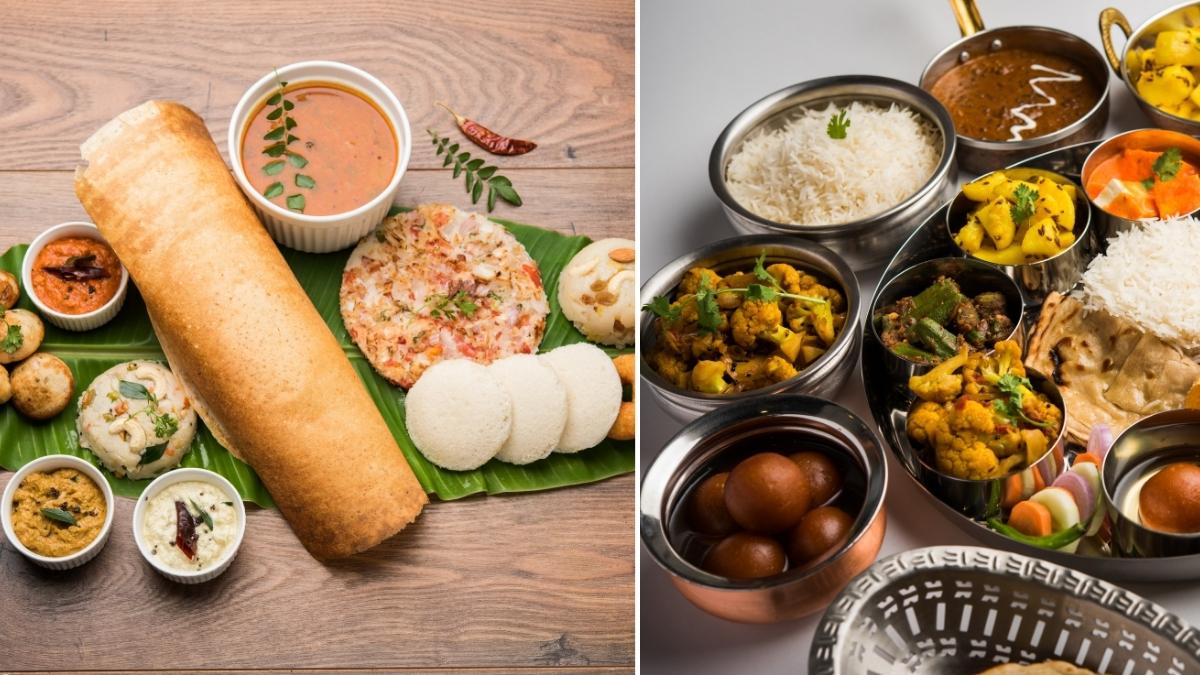If you’ve ever wondered why a dosa tastes so different from a butter chicken or why sambar feels worlds apart from dal makhani, you’re not alone. Indian cuisine is incredibly diverse, and the divide between South and North Indian food is one of the most fascinating. Let’s explore what sets them apart and what you should try from each side.
What Exactly Is the Difference Between South and North Indian Cuisine?
At the core, the difference lies in staples, spices, cooking methods, and regional influences.
- Staples: In the North, wheat-based breads like roti, naan, and paratha are common. In the South, rice is the primary staple, enjoyed in forms like steamed rice, dosa, and idli.
- Spices: North Indian cuisine often features aromatic spices such as cinnamon, cardamom, and cloves, creating rich, warm flavors. South Indian dishes are known for their bold use of tamarind, curry leaves, mustard seeds, and dried red chilies, offering tangy and spicy profiles.
- Cooking Methods: North Indian cooking frequently employs slow cooking techniques, often using ghee or mustard oil, and the tandoor (clay oven) for baking breads and grilling meats. South Indian cuisine utilizes steaming (as seen in idli and dosa), tempering (tadka) with mustard seeds and curry leaves, and lighter oils like coconut oil.
- Regional Influences: North Indian cuisine has been influenced by Persian and Mughal cultures, evident in dishes like kebabs and biryanis. South Indian food reflects indigenous traditions, with a focus on rice, lentils, and seafood, especially in coastal areas.
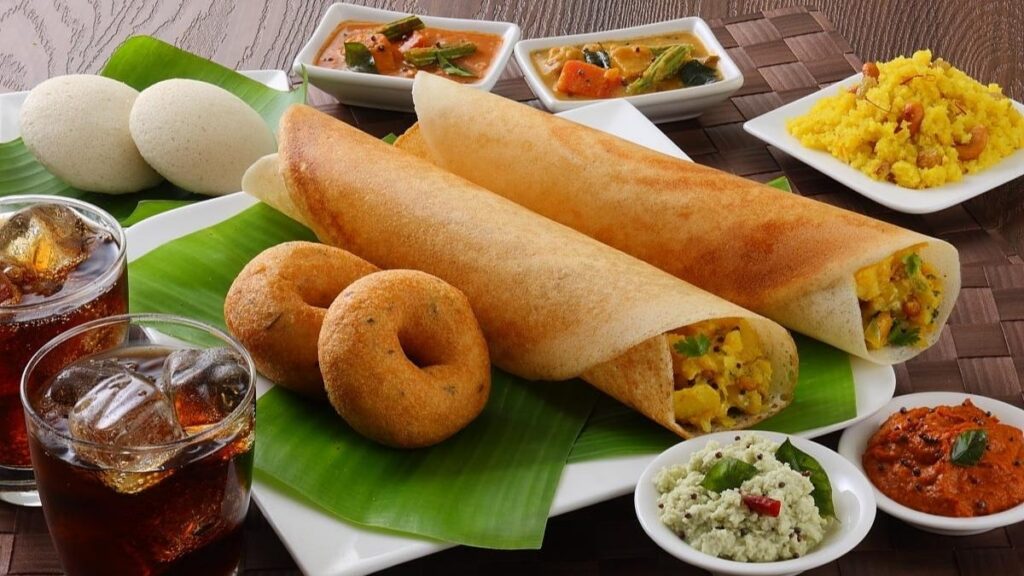
What Is the Staple Carb in Each Region?
The choice of staple carbohydrate significantly influences the cuisine:
- North India: Wheat is predominant. Meals often include roti, naan, paratha, and puri, paired with rich gravies.
- South India: Rice takes center stage. It’s served with sambar, rasam, curd rice, and used to make dosa, idli, and pongal.
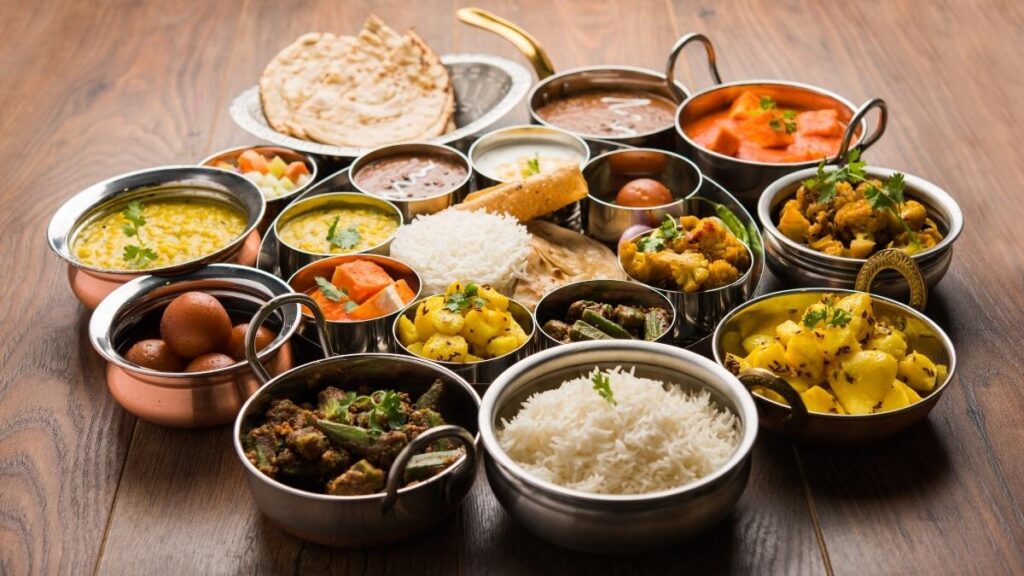
What’s the Role of Dairy and Coconut in Cooking?
Dairy and coconut are used differently in each region:
- North India: Dairy products like ghee, butter, cream, and yogurt are integral to many dishes, adding richness and depth.
- South India: Coconut is widely used in various forms – grated, milk, or oil to impart flavor and texture to dishes.
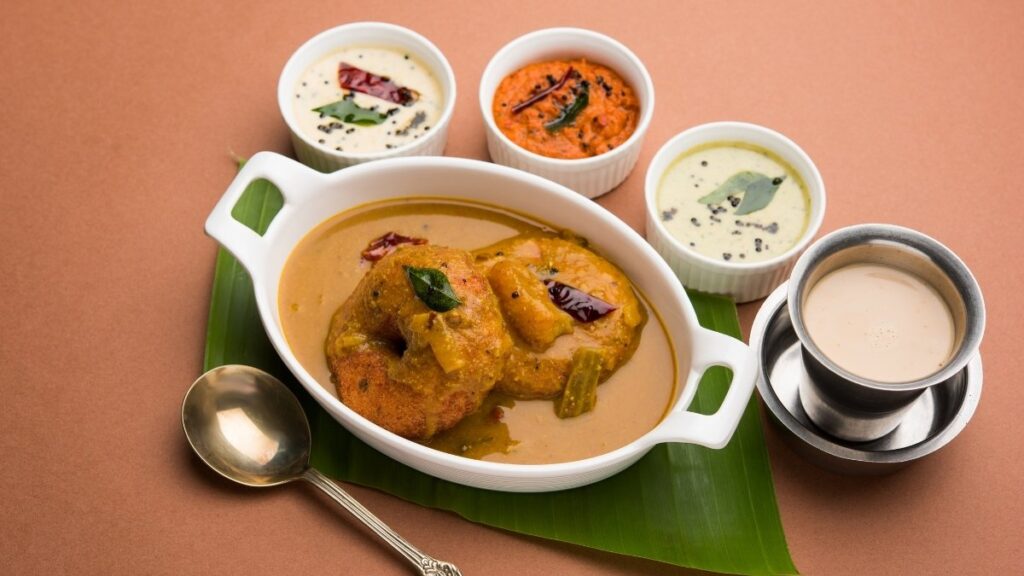
How IBR (Indian Breakfast Rituals) Differ Across Regions
Breakfast traditions vary:
- North India: Common breakfast items include stuffed parathas, puris with aloo sabzi, and chole bhature.
- South India: Breakfast is often lighter, featuring idli, dosa, vada, and pongal, typically accompanied by chutneys and sambar.
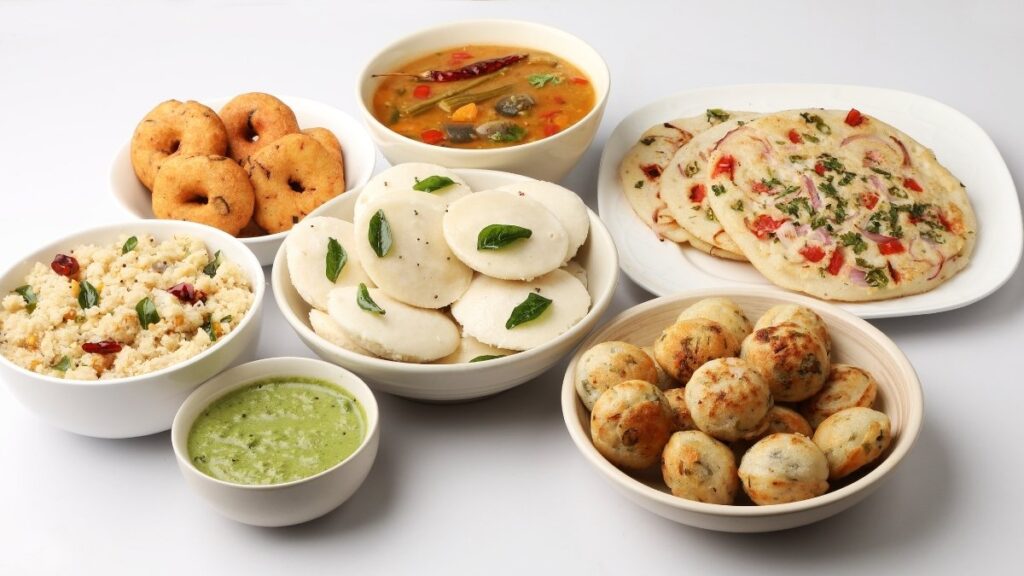
What They Are: Signature Dishes from Each Region
Here are some iconic dishes to try:
North Indian Delights:
- Butter Chicken: Creamy, mildly spiced chicken in a tomato-based gravy.
- Rogan Josh: Aromatic lamb curry with Kashmiri influences.
- Chole Bhature: Spicy chickpea curry served with deep-fried bread.
- Naan and Paratha: Soft, leavened flatbreads perfect for scooping up curries.
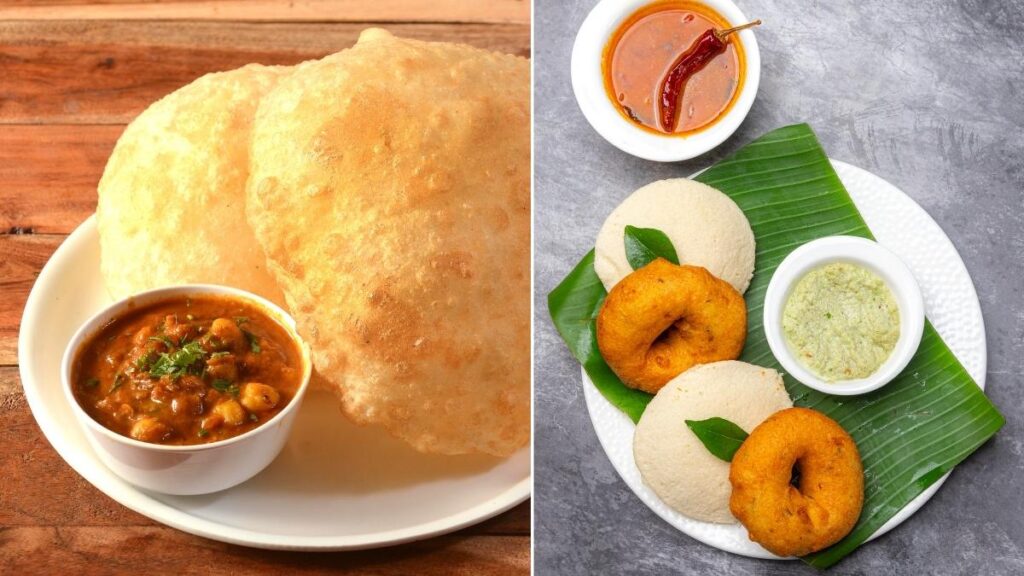
South Indian Specialties:
- Dosa: Thin, crispy rice crepes, often filled with spiced potatoes.
- Idli: Steamed rice cakes, typically served with chutneys and sambar.
- Chettinad Chicken Curry: Spicy and aromatic chicken curry from Tamil Nadu.
- Fish Curry: Coastal regions offer tangy fish curries made with tamarind and coconut.
What Is the Influence of Climate and Geography on Cuisine?
The climate and geography of each region have shaped their culinary practices:
- North India: The colder climate has led to the use of warming spices and the popularity of hearty, slow-cooked dishes.
- South India: The tropical climate and coastal geography have influenced the use of coconut, rice, and seafood in daily meals.
What Is the Street Food Scene Like in Each Region?
Street food offers a glimpse into regional flavors:
- North India: Street food includes chaat varieties like golgappa, aloo tikki, and samosas.
- South India: Popular street foods are vada, banana chips, and sundal (spiced chickpeas).
What Exactly Is the Dining Experience in Each Region?
The dining experience reflects cultural practices:
- North India: Meals are often elaborate affairs, with multiple courses and a focus on communal dining.
- South India: Meals are typically served on banana leaves, with a variety of small servings of rice, curries, and condiments.
Understanding the differences between South and North Indian cuisines enhances the appreciation of India’s rich culinary diversity. Each region offers unique flavors, ingredients, and cooking techniques that reflect its history, geography, and culture. Exploring these regional cuisines is a delightful journey for any food enthusiast.
FAQs
What is the main difference between North and South Indian cuisine?
The primary differences lie in staple foods, spices, cooking methods, and regional influences, with North India favoring wheat-based dishes and dairy, and South India focusing on rice, coconut, and seafood.
Why does South Indian food use coconut so much?
Coconut is abundant in the tropical climate of South India, making it a staple ingredient in many dishes.
How spicy is South Indian food compared to North Indian?
South Indian cuisine tends to be spicier, utilizing ingredients like dried red chilies and black pepper to achieve bold flavors.
Can you get North Indian food in South India?
Yes, many cities in South India offer North Indian cuisine, especially in urban areas with diverse populations.
How do I begin exploring both cuisines without overwhelm?
Start by trying signature dishes from each region, such as dosa from the South and butter chicken from the North, to get a taste of their distinct flavors.
